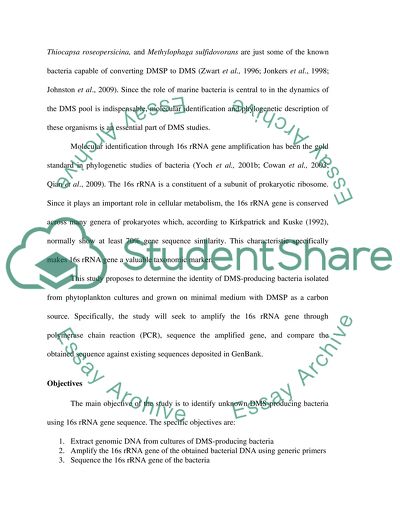Retrieved from https://studentshare.org/biology/1422063-molecular-identification-of-dms-producing-bacteria-isolated-from-marine-algae
https://studentshare.org/biology/1422063-molecular-identification-of-dms-producing-bacteria-isolated-from-marine-algae.


